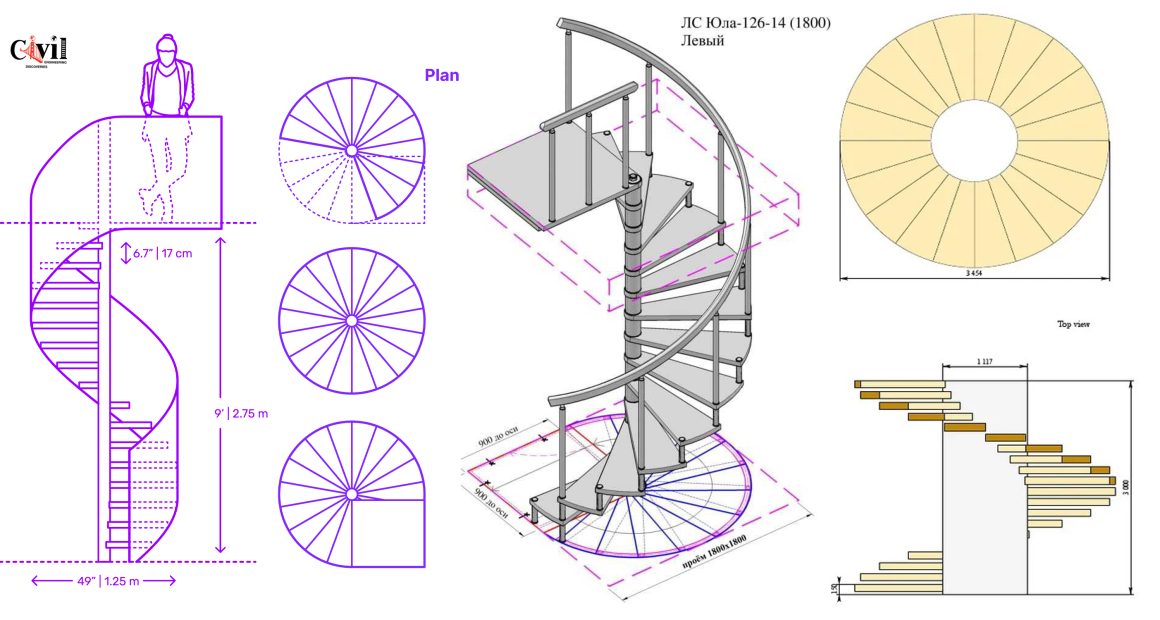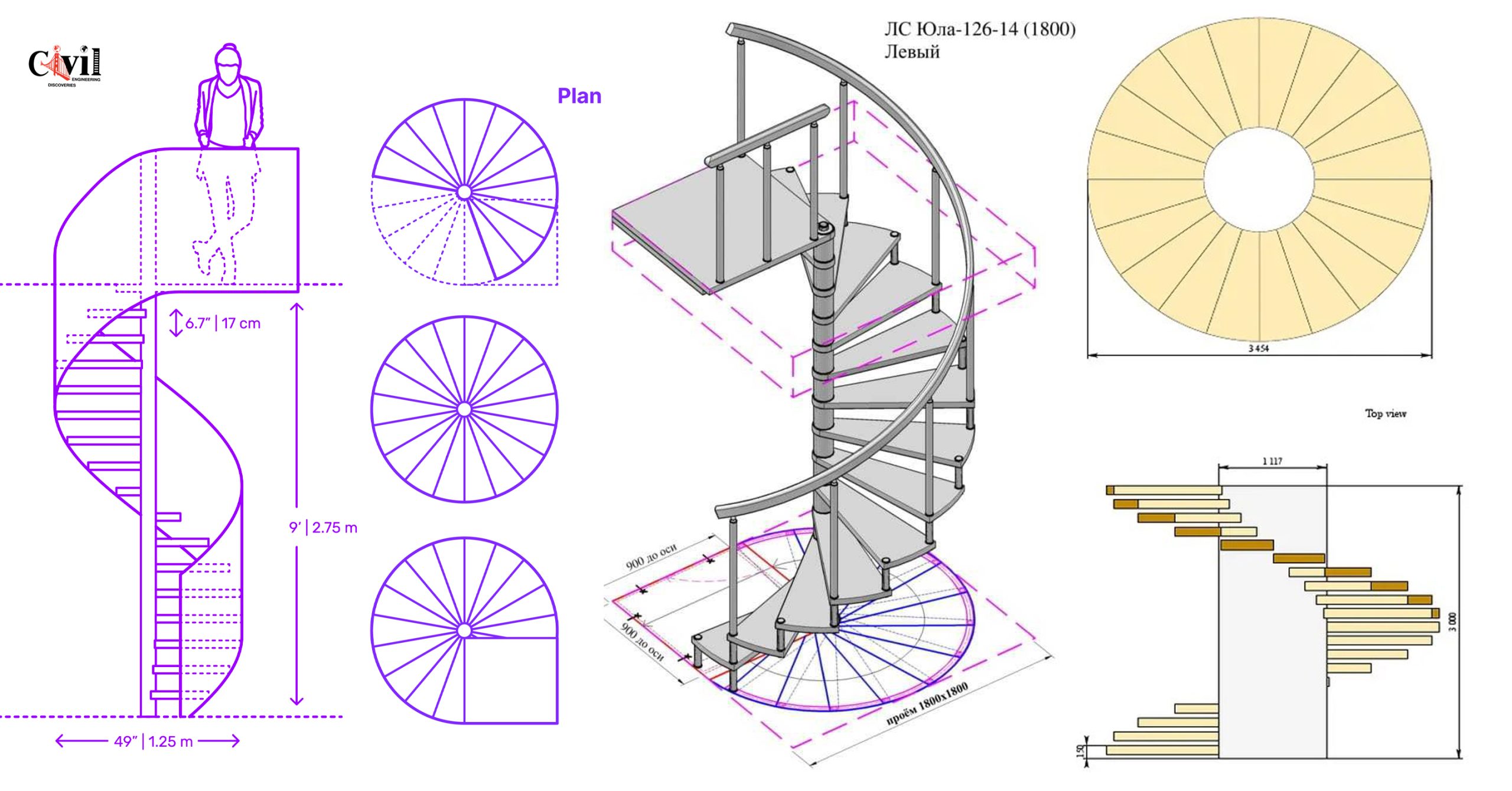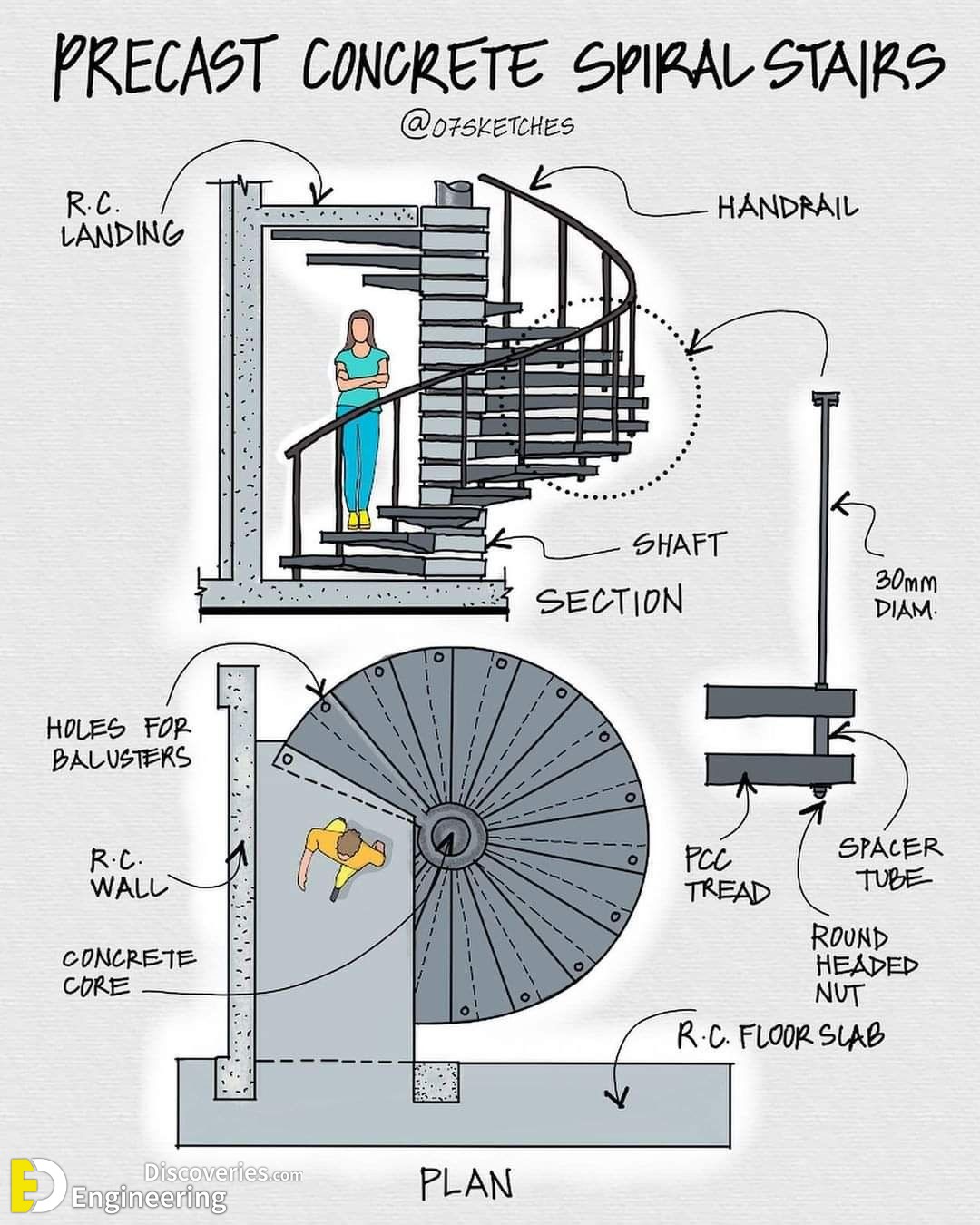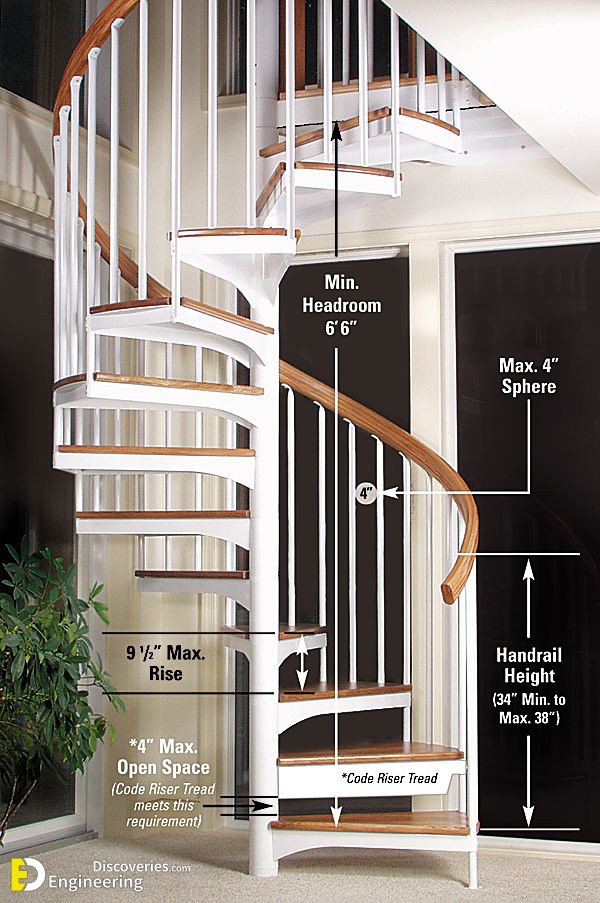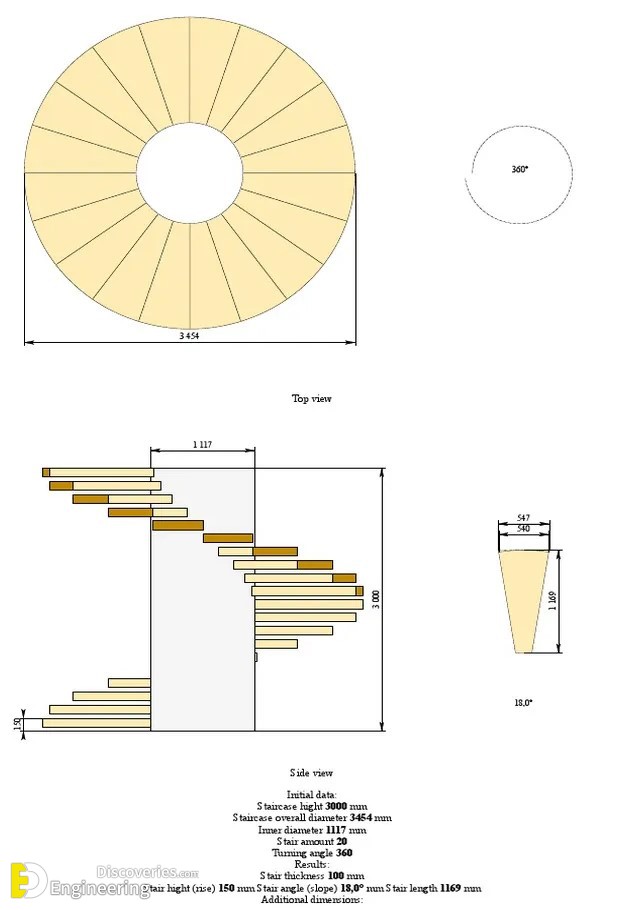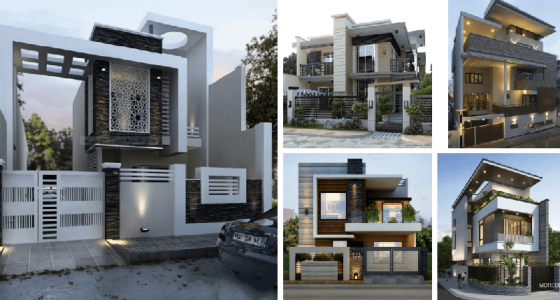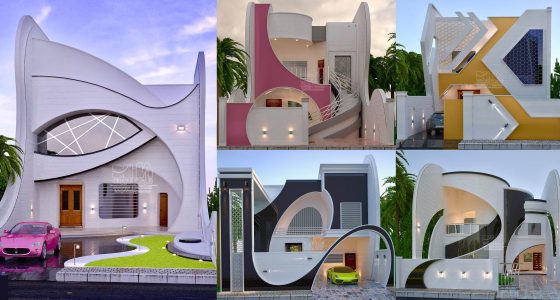Diameter: The diameter of a spiral staircase is the distance between the outer edge of the treads and the central column. The minimum diameter is typically 60 inches, but this can vary depending on the space available and the desired width of the staircase.
The angle of rotation: The angle of rotation is the number of degrees that the staircase turns as it ascends. The standard angle of rotation is 360 degrees, but this can be adjusted to fit the specific needs of the space.
Tread depth: The tread depth is the distance from the front of the tread to the back. The minimum tread depth is typically 7.5 inches, but this can be increased for comfort and safety.
Tread width: The tread width is the distance from side to side. The minimum tread width is typically 22 inches, but this can be increased for comfort and safety.
Handrails: Spiral staircases must have handrails on both sides. The handrails should be at least 34 inches high and should be spaced no more than 4 inches apart.
Materials: Spiral staircases can be made from a variety of materials, including wood, metal, and concrete. The material used will depend on the desired style and budget.
In addition to these basic considerations, there are a few other factors to keep in mind when designing a spiral staircase:
Headroom: The minimum headroom for a spiral staircase is typically 6 feet, but this can vary depending on the height of the people who will be using the staircase.
Load capacity: The load capacity of a spiral staircase is the maximum weight that it can safely support. The load capacity will depend on the materials used and the construction of the staircase.
Fire safety: Spiral staircases must meet fire safety codes. This may require the installation of fireproofing materials or the use of a fire-resistant design.
When designing a spiral staircase, it is important to consult with a qualified contractor or architect to ensure that the staircase meets all safety and code requirements.
Here are some additional tips for designing a spiral staircase:
- Consider the purpose of the staircase. Will it be used for everyday traffic, or is it primarily for decorative purposes?
- Choose the right materials. The materials you choose will affect the style, durability, and cost of the staircase.
- Make sure the staircase is safe. The staircase should have adequate headroom and handrails, and it should meet all applicable safety codes.
- Customize the design. There are many ways to customize the design of a spiral staircase, such as the shape of the treads, the style of the handrails, and the materials used.
With careful planning and design, you can create a spiral staircase that is both beautiful and functional.
Click Here To See Essential Details About RCC Staircase Construction You Can’t Miss!
